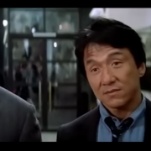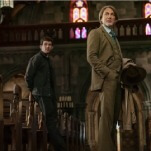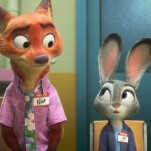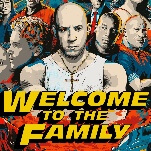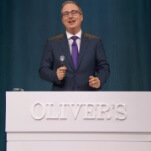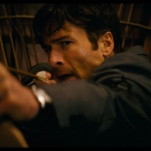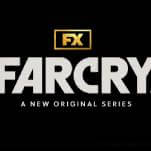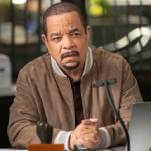Since 2007, TV Club has dissected television episode by episode. Beginning this September, The A.V. Club will also step back to take a wider view in our new TV Reviews section. With pre-air reviews of new shows, returning favorites, and noteworthy finales, TV Reviews doesn’t replace TV Club—as usual, some shows will get the weekly treatment—but it adds a look at a bigger picture.
The closest relative DNA-wise to The Goldbergs is The Wonder Years. It’s near impossible not to compare the two. A family of five (plus grandpa, in the case of this new series) star in relatable tales of a time gone by. The 1960s setting of The Wonder Years is steeped in the warm nostalgic glow of a simpler time. Through the narration of Patton Oswalt (following in the spiritual footsteps of Daniel Stern), The Goldbergs immediately alerts the audience that this won’t be the case. There will be no nostalgic glow. Instead, there will be yelling; less Leave It To Beaver, more All In The Family. Where The Wonder Years was a soft embrace, The Goldbergs is a swift kick to the groin. Sometimes that can work, but in the pilot it’s more of a grating turn off.
Told from the perspective of youngest son Sean Giambrone, The Goldbergs centers around the titular family as they yell their way through universal family experiences. Preceding Giambrone in the birth order is older sister Hayley Orrantia, who has little to do in the pilot, and brother Troy Gentile, whose goal is to get a driver’s license so he can be as far away from his family as possible. At times during the first episode, it’s hard to blame him. Looking over the clan is mom Wendi McLendon-Covey, whose life revolves around her three children, and dad Jeff Garlin, whose favorite term of endearment is “moron.” Rounding out the crew is George Segal as swingin’ Pops, who wears leisure suits and discusses the bang-ability of other senior citizens.
Breaking In creator Adam F. Goldberg based this show on his own family so acutely, the end credits roll over home video of his actual family doing the exact same things we’ve just seen his created characters do (Orrantia plays an invented sibling, which may explain why she’s the thinnest character). It’s one of the pilot’s most fun moments, serving the show beyond a behind-the-scenes look. These characters feel like caricatures, but there are real people standing behind them. In both the actual footage and on the show, every character is introduced in some kind of anger-filled turmoil. But as Oswalt reiterates again and again, these seemingly harsh interactions do not hide deep-seated resentments—this is how the family members show their love. The only problem is that while Goldberg may remember these times with the same rose-colored haze inherent in The Wonder Years formula, it’s not particularly fun for anyone else to watch six people yell at one another for a half-hour. A lot of viewers can just turn off the TV and see that.
The Goldbergs is firmly planted in the 1980s—if the 1980s only consisted of a pastiche of pop-culture references. GoBots! REO Speedwagon! Brooke Shields! “I’m going to crimp your face!” Orrantia threatens Giambrone, who has a video camera glued to his hands at all times. And just in case there is any doubt this is set in the ’80s, a character will surely bring it up.
The same could be said for the shoehorned sentimentality, which feels so at odds with the rest of the episode. A show can’t live on yelling alone, but the few scenes where the characters speak quietly and slowly to signify their seriousness are poorly integrated and unearned. The pilot centers around Gentile’s attempts to learn how to drive, leading to life lessons from Garlin and McLendon-Covey that require a different type of parenting than they’ve been practicing. It screams, “Like these characters! They aren’t the monsters you’ve perceived them to be for the last half-hour!” But these characters feel more natural when they’re screaming.
The Goldbergs is far from terrible—it just needs to learn how to mix the quirky dysfunction with the heartwarming moments in the style of shows like Malcolm In The Middle or Raising Hope. And there’s certainly potential to grow, especially with its stacked deck of an adult cast—particularly McLendon-Covey, who is able to believably tell a cop she will haunt his dreams, and then worriedly ask about her son’s well-being. When the Goldberg matriarch tells off a neighbor for staring at her fighting family, it’s the one time that repeated message of love wrought by aggression makes sense. She’s protecting her family, no matter what the neighbors think. It’s a short moment, but that’s the level of goofy sentimentality that needs to pervade future episodes, if only so the actors don’t blow out their voices.
Created by: Adam F. Goldberg
Starring: Jeff Garlin, Wendi McLendon-Covey, George Segal
Debuting: Tuesday, September 24 at 9 p.m. Eastern on ABC
Format: single-camera half-hour sitcom
Pilot episode watched for review































